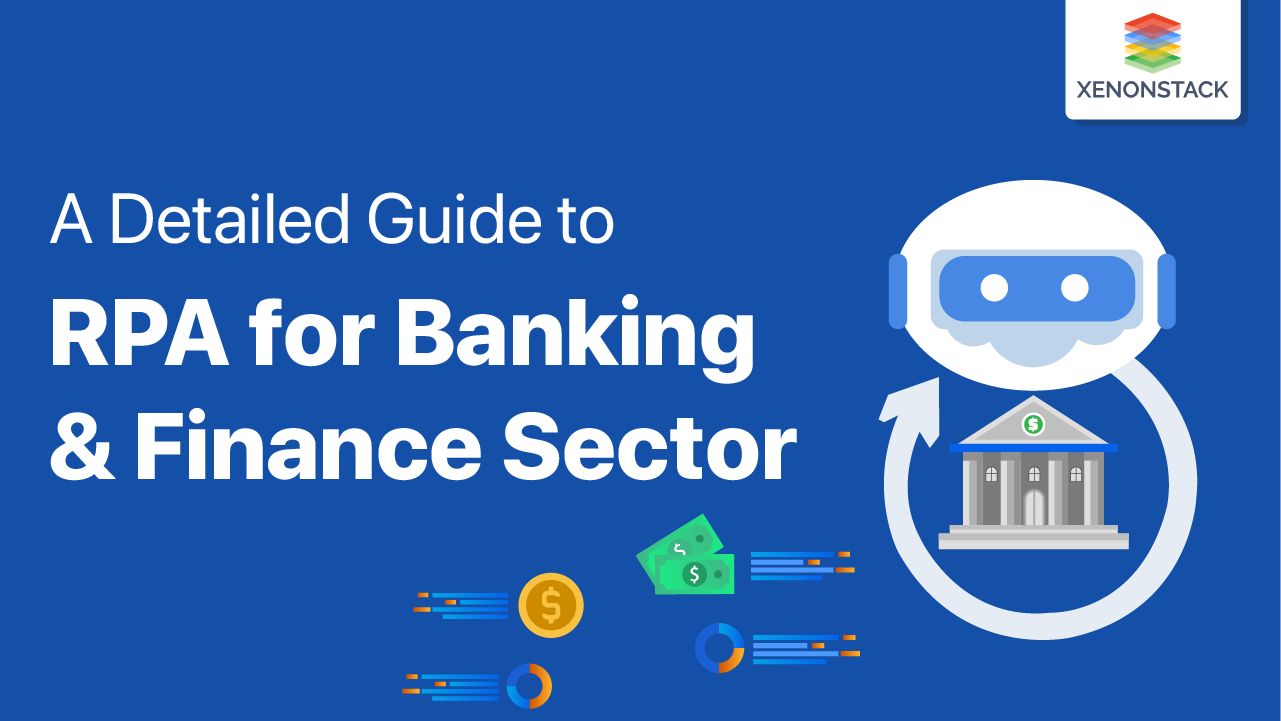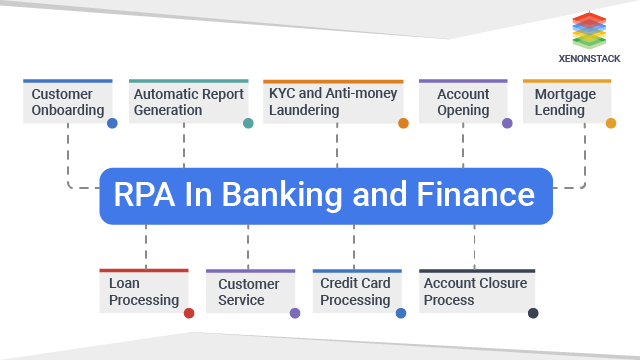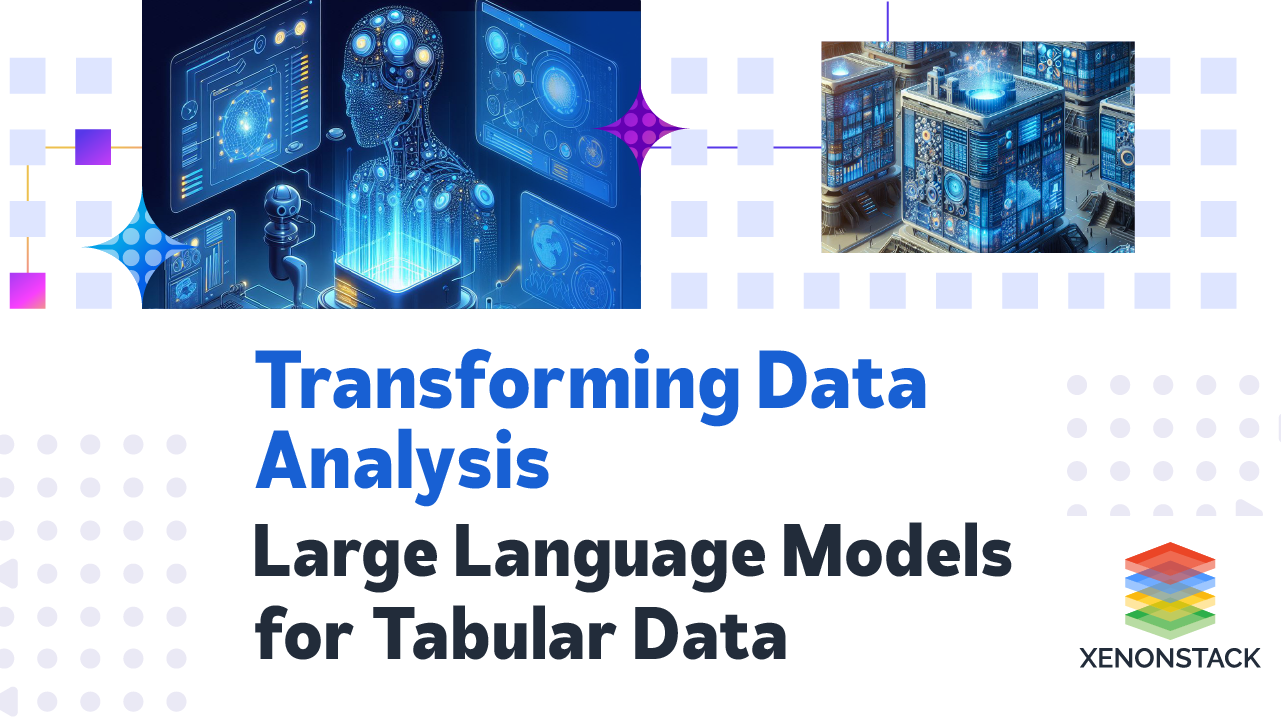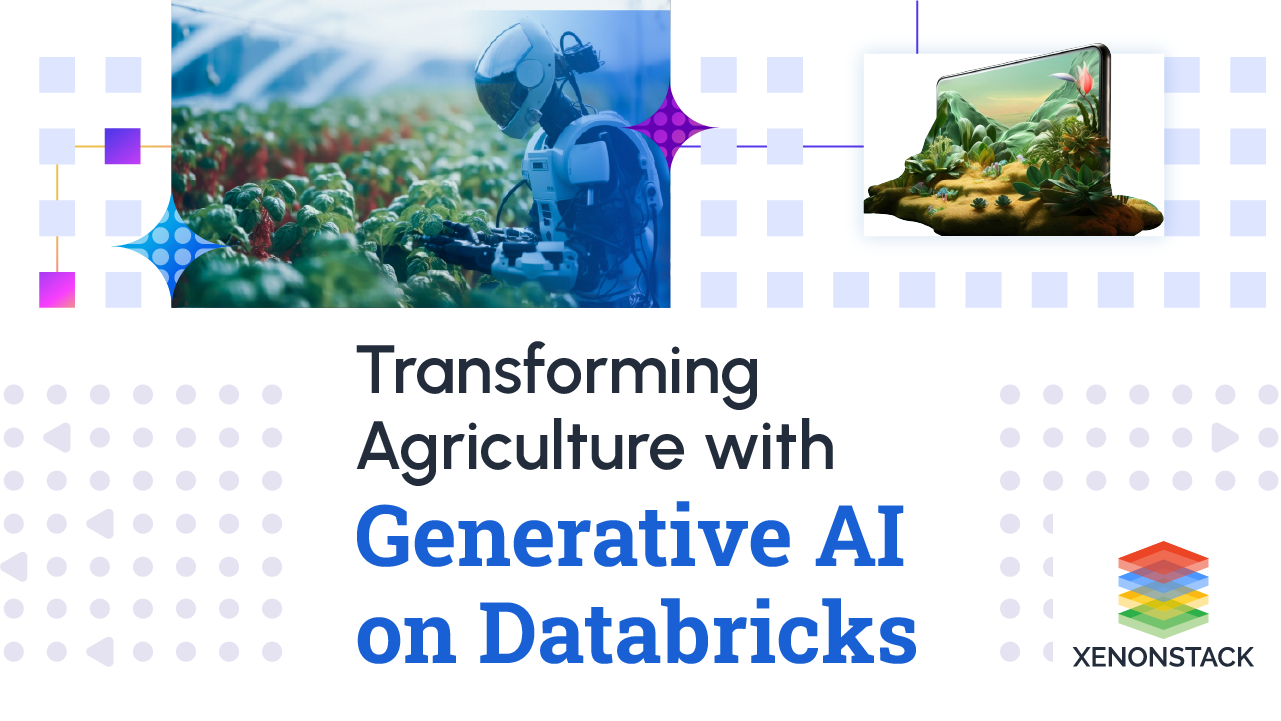
Introduction RPA in Finance and Banking
Before we get start with Robotic Process Automation for Financial Services let's understand the current scenario. The business environment is continuously changing, and in this changing environment. The financial industry is under great pressure to cut costs and provide enhanced services to the customer while maintaining their competitive edge.
The customer today wants easy and quick access to services, great personalization and value for money. The financial institutions have to meet these while maintaining their costs and all of this is achievable with Robotic Process Automation. It involves bots; bots that are deployed to mimic the day-to-day, routine tasks which are performed using some business rule and can be easily automated. A large number of financial institutions have been opting for it to meet these needs.
Artificial intelligence is helping banks become more efficient in the process of detecting fraud and Robotic Process Automation.. Source, Applications of AI in Banking and its BenefitsIt aims to automate basic tasks like
- Filling out forms
- Extracting and merging data
- Formatting data
- Copying and pasting data
- Reading and writing database
It is helping financial institutions to provide 24/7 support for important activities and processes. They can get real-time support and use staff more strategically.
What is Robotic Process Automation in Banking?
Robotic accounting, also known as accounting process automation, is characterized by using applications such as UiPath and Blue Prism to reduce the amount of human labor needed to process accounting and finance department transactions. Consider "accounting robots" as a mechanism that can minimize the time and effort required to transfer routine data between accounting systems and outside applications, rather than being limited to only one.
Accounting it is often misunderstood as a human substitute, but it is more of a "bionic arm" that can help finance and accounting operations workers process work more quickly by minimizing data movement work. UiPath, Blue Prism, and Automation Everywhere have made the work and expertise needed to build an artificially intelligent accounting workforce, a.k.a. RPA bots, easier by eliminating the need to understand computer code to integrate data movement between different data sources.
How are financial institutions making use of Robotic Process Automation?
We can see how banks, financial institutions and insurance companies are the most eminent users of the automatic processes by it. Banks and financial institutions aim to continuously evolve firstly to provide better customer satisfaction and survive the competition posed by virtual banking solutions. They are under immense pressure to boost their efficiency and optimize their resources which have resulted in opting for automation of their processes. Banks and financial services can use it for two main activities:- To install end-user device software bots
- To build an Artificial Intelligence workforce
In the finance industry, it serves as an essential tool to address the demands of the sector and increase their efficiency by reducing their costs with the services-through-software model. To seize the opportunity rising in their industry, they should follow a strategic approach.
Forecasting plans and developing data-driven decision is a must to improve the business, and reports are the best way to showcase the stats. Source, Management Reporting vs Financial Reporting
RPA in financial services focuses on routine administrative kind of work, such as copying data from email to the system. Financial Services functions at the presentation layer; such as scraping data associated with multiple, simple tasks that occupy a large part of the day. Many US banks and insurance companies have already implemented it processes- automating about 800 operations. The exponential growth of it can be predict by the fact that the finance industry is going to be worth $2.9billion by 2023, which is a massive increase from $250 million in 2016, as per a recent report.
What are the challenges?
The industry has to face many challenges. Some of them are discussed below.
The Intervention of Automation and AI
Accounting processes are still automated to some degree, but with the advent of AI and virtual reality technology, key accounting tasks like collecting receipts and converting bills into financial statements have been automated. Operations can save 25,000 hours of work and increase productivity by introducing an automated method in accounting. This may be good news for businesses, but it has put accounting professionals' employment at risk.
Need of Online Accounting Services
The task of offering virtual accounting services has been thrown ahead of the accounting industry due to existing social distancing and lockdown norms. Accounting firms must now meet with customers virtually and delegate work to staff members who work from home. Traditional accounting firms that haven't kept up with the times and digitized their operations feel the brunt of online accounting services' wrath.
Competition
Inside the financial services sector, there is still a lot of competition. Consumers, as previously said, want more personalized service. They also wish to have more digital systems that are easier to use. Institutions that offer any of these programs would have a significant market share. Consumers are less concerned with brand loyalty and identity these days. They care for themselves. Customers will stay with institutions that offer such services.
Organizing Big Data
Big data is both a requirement and an impediment for financial services companies. Since a large amount of data is generated by various sources, big data is growing. These legacy data structures can't accommodate the amount of data coming in because it's structured and unstructured.
By 2021, according to an EMC report, there will be 44 zettabytes of digital data. This equates to 44 quadrillion gigabytes. Financial service providers face sorting through their data to decide what is useful and what isn't.
How it is useful in the Finance and Banking Industry?
Here is a list of various tasks that are being automated in the financial services sector:Automatic Report Generation
A regular requirement of a bank is to generate compliance reports of fraudulent activities in the form of suspicious activity report or SAR which have to be checked by the compliance officers and read manually and fill in the details in the SAR which is an extremely cumbersome task and takes a lot of time. But, if we implement it with natural language generation capability, this entire process can be quickly completed in record time where it can read through the process an extract the required information for filling in SAR which leads to a reduction in operational cost and also saves time.Customer Onboarding
Customer onboarding is a long and tedious process primarily because many documents are required for manual verification. This whole process can easily be automated by using its tools to extract the data from KYC using OCR, which can then be matched with the data provided by the customer. If no discrepancies are encountered, then it can automatically enter the data into the customer management portal. This not only removes the chances of error but also saves time and effort put in by the employees.Robotic Process Automation is one transformation that is automating our daily repetitive tasks. Taken From Article, Best RPA Use-Cases in Industries
KYC and Anti-money Laundering
Both these processes are very data-intensive, which makes them suitable for RPA, ranging from activities of catching suspicious banking transactions or automating manual processes. We can quickly implement it, which saves both time and cost as compared to the traditional solutions provided.Account Opening
By implementation of it, the process of account opening has become much more straightforward, quick and accurate. Automation directly eliminates errors that may exist between the core banking system and new account opening request. Thus enhancing the data quality of the system.Mortgage Lending
The process of mortgage lending is an extremely time consuming and thus making it a perfect choice for automation. It allows for automation of various tasks that are crucial in the mortgage lending process including loan initiation, document processing, quality control etc. This helps in faster completion of the process leading to enhanced customer satisfaction. Another benefit of this is that it unburdens the employees from doing manual tasks, thus helping them to focus on essential tasks.Mode of payments involving Credit Card, Debit Card and Net Banking is prone to frauds.Taken From Article, Credit Card Fraud Detection
Loan Processing
Loan Processing has always been considered a very tedious process, even though banks have automated it to some extent, but further automation will bring down the processing to a record 10-15 minute process. This will lead to increased customer satisfaction and reduced workload on employees.Customer Service
There is a large volume of common customer queries making it difficult for the staff to respond to them with low turnaround time. Its tools allow them to automate such mundane rule-based tasks to effectively respond to respond to queries in real-time, thereby reducing the turnaround time.Credit Card Processing
Credit card processing is one of the most cumbersome and tedious processes due to its extensive validation checks. But by implementing RPA strategy, we can make a quick decision to either approve or disapprove application with a rule-based approach.Account Closure Process
There is an enormous amount of account closing requests monthly which the bank has to deal with primarily due to the non-compliance on the part of the customers. It can help in solving this by easily tracking all such customers and sending them automatically generated notification and reminder for submission of required documents.
List of Accounting and Financial Services companies are using RPA?
- Global insurer Zurich has freed up to 40%of their commercial underwriter process by implementing it. Which has allowed them to focus on high-value-added tasks and devote more time on complex policies. Zurich related its pilot program realized a 50% cost reduction motivating them to expand its implementation further. It has also won an award for the same.
- A large global insurer with operation across the world and businesses in all lines benefitted from its implementation. Earlier it had to go through 26 different sites and repeatedly search to make sure payment against claims was being made and had to this four times on different dates of the month. After the implementation of it, this task of 4 days was reduced to only 2 hours, saving those thousands of hours of FTE in a year and also reducing errors.
- By deploying it the Singaporean bank, OCBC has been able to reduce the amount of time taken to re-price home loans from 45 minutes to 1 minute. The bot also checks the customer's eligibility. To have their loans re-priced, recommends option for re-pricing and can draft a recommendation email too
- By automating their processes, Japanese financial institutions Sumitomo Mitsui was able to cut out 400,000 hours of manual labour for employees.
A software tool design to execute the Human manual process into automation to work on another complex task. Taken From Article, RPA Governance Model with Best Practices via CoE
What are the benefits of RPA in Banking?
- Accelerates customer onboarding
- Increases revenue and cash flow
- Reduces operational costs
- Automates manual process
- Reduces human interventions enhancing process efficiency
- Decreases customer loss
- Provides enhanced customer experience
- Reduces churn
- Improves customer satisfaction quotient
- Engenders customer loyalty and trust
- Enhances data quality
- Stabilizes industry best practices
Risks Associated with RPA in Banking & Finance
All the process change and new technology come with their share of risks, which may affect the functionality of the organization. Yet compared to long-term core technology implementation, the risk of it is far low. This is because robots can be turned off and just affects the individual user's desktop setting. There are few risks with it are below:
- Operational Risk: The internal staff might be worried about losing their jobs to the robots with the increase in the processes which are being automated by it, which is not the case. Robots are the tools that help the employees to reduce the tasks they struggle with daily. Thus improving their productivity in working towards core business activities.
- Compliance Risk: While it is user friendly, but its scope and inventory management is not at all easy. Thus, it requires full proof audit trials to ensure that there is no discrepancy in the work and job.
- Data-quality Risk: The quality of data might also suffer because of it because there need to be standards in the way that data is presented. Thus, there is a risk to the quality of data and needs to coordinate between the ways information display.
- Ethical Risk: Enterprises need to balance their investments between people and technology, just outsourcing or replacing the staff can negatively impact the morale of the employees. But, it allows enterprises to utilize the best of both worlds that is an optimum combination of humans and technology.
Key RPA Vendors in the Financial Services Sector
There are a lot of vendors that are working in the financial market to provide their automation services. But there are few leaders in the market. These are:
- Blue Prism
- Automation Anywhere
- UiPath
- Thoughtonomy
- WorkFusion
Automation Anywhere provides a centralized deployment and control system to manage, monitor, and scale bots across multiple business functions. Taken From Article, Automation Anywhere Solutions and Services
Use Cases of Robotic Process Automation in Finance and Accounting
The use cases of Robotic Process Automation in Finance and accounting are below highlighted:
Daily Sales Reconciliation (DSR)
The client processes large amounts of cash and credit card transactions in several locations every day. The management team must interpret these transactions to provide real-time financial performance analysis. Journal entries are prepared manually by analyzing the POS files received by various locations. Then all the Cash, credit card Amex transactions are reconciled with the bank statement to clear the transactions. If any discrepancies are found, a full check for the transaction takes place.
The major challenge in this process is this process requires a lot of time as the amount of transactions happening can be any number for each location. If this number gets bigger, the time to complete the reconciliation also increases. Working with a large amount of transactions also increases the probability of errors.
It is a new technology that can be proposed in this work that requires some repetitive work. Using it, the bot can extract the amount from the sales, match it with the bank statement for every tender, and provide an alert if any discrepancy is found.
Bank Reconciliation (BRS)
The method of comparing the balances of an entity's financial reports for a cash account to the related details on a bank statement is known as bank reconciliation. This procedure aims to determine the discrepancies between the two and, if necessary, make adjustments to the accounting records. A bank reconciliation should be performed at regular intervals for all bank accounts to ensure that a company's cash records are accurate. Otherwise, cash balances can be significantly smaller than predicted, resulting in bounced checks or overdraft fees.
Clearing of the cheques is done on oracle. The BRS process starts by identifying the common and uncommon cheques in files downloaded from Oracle and bank statements and then clearing the common cheques present in both the oracle file and bank statement. Cash and Credit card transactions are also reconciled with the oracle file and the bank statement in the BRS process. The segregation of all the other transactions like bank charges, cash pickup charges, exchange gain, and other deposits also occurs in this process.
BRS process is a repetitive process and requires a lot of time, and by going through this much amount of data regularly might unsatisfy the employee performing the process. Using an RPA bot can perform all the reconciliation work, help the FTE work with the bot, and produce a better result.
Find the Best Solution for Digitally Transforming your Enterprise. Click to explore about, Talk to RPA Specialist
Conclusion
It has already gathered a huge customer base for all the businesses. That are looking for reduced cost and increased efficiency. It seeks to develop human resources in a way that the efforts put in are minimum. It is a technology that has the potential to transform the sphere of financial services. Additionally, it offers opportunities to accelerate the business process by automating them. Also, it allows the employees to free themselves from time-consuming manual work. By deploying RPA, enterprises can easily streamline their functions like accounting; it can efficiently assemble and consolidate data. It can also significantly reduce the expenses from different branches, create an outstanding customer experience by offering 24/7 support and can also help in lowering cyber fraud.
- Discover more about Intelligent Process Automation vs RPA
- Read here How To Get Started with Cognitive RPA?
- Explore about FinDevOps


